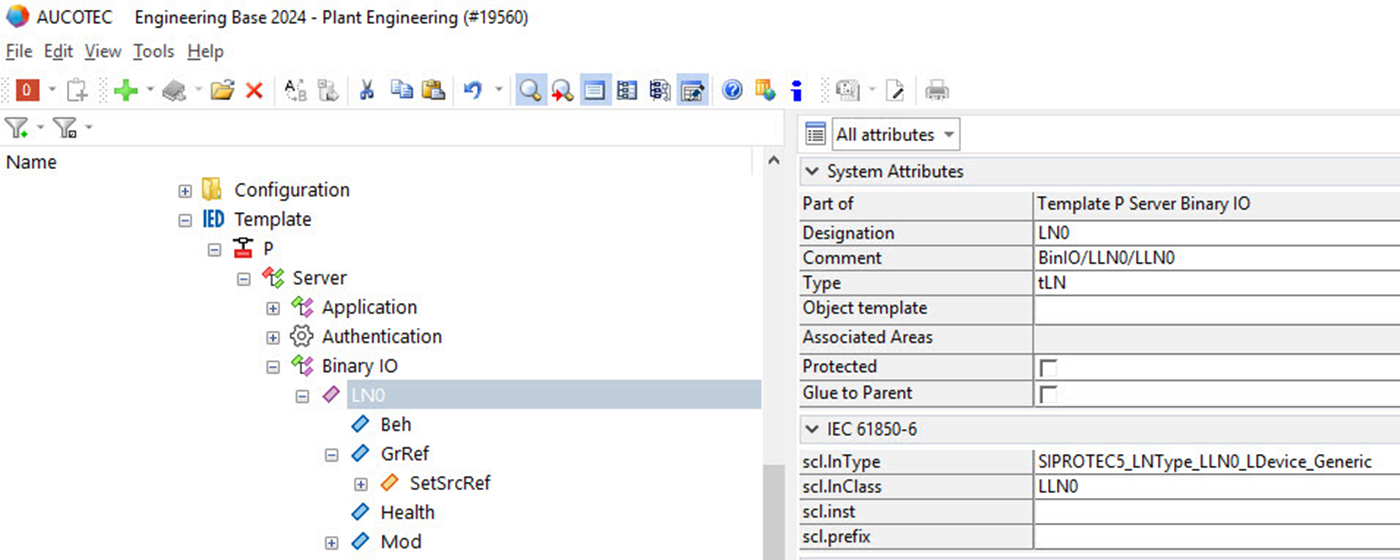Energy distributors are under enormous pressure. Time is of the essence when it comes to grid expansion and CO2 neutrality. The number of substations will have to be multiplied considerably in order to bring the renewable, i.e. very distributed, energy to the sockets. The requirements of IEC 61850 are an additional challenge for planners. All of this requires considerable human resources – or Engineering Base (EB) developed by AUCOTEC.
The EB cooperation platform covers the entire engineering workflow for substations; it is the only system in the world that also integrates the control technology definition in accordance with IEC 61850. This enables planning teams and operators alike to master the enormous project volume:
From single line to maintenance: 50 years in one system
EB starts right from the single-line diagram, where engineering professionals in primary technology define the devices – previously done in a separate tool. They then send a device list or a DWG to the secondary technology department, where the SL diagram has to be set up again. "This duplication of work can be avoided if primary technology also uses EB," explains Michaela Imbusch, Product Manager for PTD. This means that secondary technology can seamlessly begin detailed planning in EB as soon as the first device has been defined. Waiting is a thing of the past.
But EB goes even further: "We are also building a bridge from secondary to control technology. From 2024, the control technology definition – conforming to standards in accordance with IEC 61850 – will be directly integrated into EB. This is unique in the world: all disciplines on a common database," emphasizes Imbusch. As a single source of truth, the engineering software combines all relevant data into a complete plant twin and keeps it consistent and up-to-date throughout the entire life cycle of the plant – which can be 50 years or more. All disciplines have access to the data model and every change is immediately visible and editable for everyone. "Reliable up-to-dateness is achieved without waiting, coordination or manual transfer, i.e. without the associated errors," emphasizes the product manager.
As the center of all plant knowledge, EB also helps with maintenance. Thanks to simple options for restoring change data to EB – for example via a mobile device and web service from anywhere at any time – the enormous value of an always up-to-date as-built status can be easily maintained over the entire service life of the plant.
IEC 61850: More digitalization, more importance
EB's implementation of IEC 61850 is as unique as its consistency. The standard for the vendor-neutral description of devices in substations and with specifications on how these devices may communicate virtually defines the DNA of the plants. Entire congresses are devoted solely to it, and it causes a lot of headaches for operating companies. This is because the digital substations of the future, which need to be planned quickly in large quantities to achieve decarbonization targets, will mainly contain servers instead of rows of control cabinets. Data bus systems then handle the exchange of information from the field to the control system. This makes IEC 61850 even more important.
Consistency provides relief
It has been supported by EB for years. Until now, however, this has been done by integrating the Substation Configuration Tool (SCT) developed by AUCOTEC partner H&S. With the full integration of the control technology definitions, plant configuration based on the required Substation Configuration Language SCL and the generation of the normative SCD files (Substation Configuration Description) is possible directly in EB. Without XML outputs and transfers or tool synchronization. "The functional data models of the Intelligent Electrical Devices (IED) are directly linked to their hardware models," explains Imbusch. This results in unique consistency, accelerates projects and ensures future-proof archiving of valuable data in a standardized format.
At the same time, the system landscape is significantly streamlined, taking the pressure off IT. This linking of the hardware and software worlds is also a considerable relief for project managers. "Always knowing where the data is and being able to rely on it being up to date is anything but a matter of course," says Michaela Imbusch.




